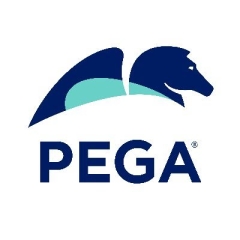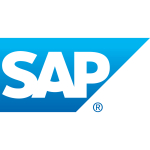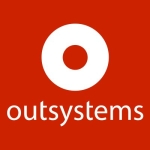What is our primary use case?
Our customers range from banking to insurance to telco. In banking, customers use Pega for marketing, sales management, and onboarding processes as in loan onboarding or customer onboarding. They also use it for customer service, for example, when a customer calls up the bank to handle a payment inquiry or a problem. Pega also handles collections. We also deal with many of the operational processes inside the banks.
In insurance, we work with Pega on property, casualty, and health. In insurance, we have built underwriting systems, and systems to manage attack claims, as well as the sales and customer management service part.
When it comes to telcos, it's primarily in the marketing area. Besides that, we have customers in the government sector. So, in government sectors, it is primarily to automate many of the citizen services, as well as to automate many other online operations.
What is most valuable?
Pega has traditionally been very good in inclusion automation, which primarily deals with case management, and following the automation along any other processes.
Pega has a capability called the Pega series, which is a customer lesson hub. With it, you can offer or create a business conversation with the customer. For example, if a customer comes onto a bank's website and they're searching for a loan, we have to present the right offer to the customer in milliseconds. With Pega, you can quickly understand the customer and therefore be able to present the right, most personalized offer to them.
Many customers use Pega for customer service also. It's quite useful for that.
It is stable.
We find the product to be scalable.
What needs improvement?
Customers expect more out-of-the-box solutions. Right now, Pega is a platform on which you can build anything; as a platform, it's very powerful. However, what customers also expect is a quick turnaround. That is one area where they can improve. If they could create more business-friendly, customer-friendly solutions in the areas where customers traditionally use Pega, that would be helpful. That way, the same solution can solve similar problems for other customers, and it is more plug-and-play.
They are building in process mining. They acquired a technology company in Brazil, so they're bringing process mining over into the product. Process mining will help the customers to do continuous business implementations since they will find challenges to help adjust processes. That is one thing that we're looking forward to.
For how long have I used the solution?
We've been a Pega partner for seven years.
What do I think about the stability of the solution?
From a stability point of view, Pega is increasingly used in markets like Southeast Asia, where the volumes are very high. From that perspective, it's able to handle large volumes. Also, as a modern SaaS technology, it is compliant with all the standards which are required. It is very compliant and very stable.
What do I think about the scalability of the solution?
When it comes to using software in a low-volume market and a few of the other smaller markets, scalability is not much of a factor. When it comes to implementation in countries in Southeast Asia like Vietnam or Indonesia, then the volumes are very high, and we have seen Pega stand up to those challenges. It is scalable.
How are customer service and support?
Technical support on Pega has improved in recent days with the advent of the cloud. If there is any kind of improvements that are required, Pega manages that.
For anything where any of the customers require advanced support from Pega, the support team is always available. They have specialized teams now to basically provide the exact support that is needed. Earlier, it used to be one team. Now, most specialized teams are available on Pega to provide the required support based on the need.
How was the initial setup?
The initial setup is very straightforward, although if it is a customer who is new, they might find it challenging. If they involve the right system integrator, then along with the right system integrator, I don't see a challenge there.
Pega is also available on the cloud as well as on-prem. It is one of the few types of software which is available both on-prem and on the cloud. With the cloud solution, starting up is pretty easy. A successful setup is basically a combination of using the right partner and going onto the cloud to reduce the initial friction to onboard Pega.
From a staff point of view, for a standard application, it requires 10 to 12 resources, and they would involve people who are lead architects and developers.
It would require business analysts or someone who can work with the business to understand and visualize the solution.
It requires one engagement lead to work with the customer and manage the entire project and one or two clusters. With a team of 10 people, we have seen we can deliver end-to-end applications on Pega quite easily.
When it comes to maintenance on production, it requires a team of either two or three based on the size of the application.
What was our ROI?
We have witnessed an ROI.
It varies based on the business case of the customer. For traditional operational processes where either the operation process is not automated - or even if is - it can create time-saving scenarios.
In the scenarios where Pega is used in the market capabilities where it's more for offer generation or to upsell and cross-sell to the customers, we have seen an uptick in the revenue as Pega did show a conversion-based increase in outcomes.
When it comes to other scenarios, like based on the business context, if it is a customer's service application, that's where we have seen Pega help improve the average call handling. It has the capability of RPA. Therefore, during the call with the customer, if you have to fit information from other systems and quickly provide all the information in a very short time in front of the call center representative. It has helped reduce the average call handling time and the number of FTS required to manage customer service.
Therefore, it has had an impact on customer satisfaction, as well as reducing the overall cost related to servicing customers.
What other advice do I have?
We are one of the largest Pega partners.
They have a primary product: case management, clean automation, and customer engagement. Various customers will be in various versions of Pega, and we deal with all versions.
If customers require an enterprise-wide implementation, they should be aware that there are requirements that are specific to the various lines of business. If they require such complexity to be addressed in a very specialized way, Pega can work well.
I'd rate the solution nine out of ten.
Disclosure: My company has a business relationship with this vendor other than being a customer. Partner























